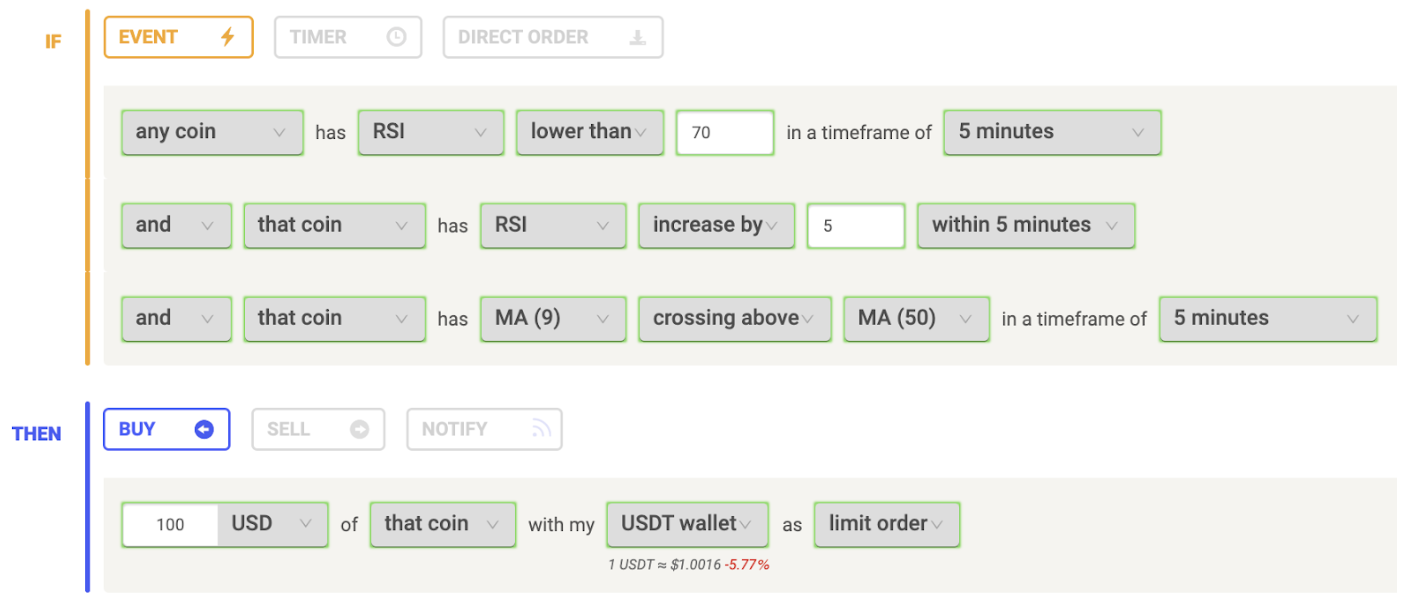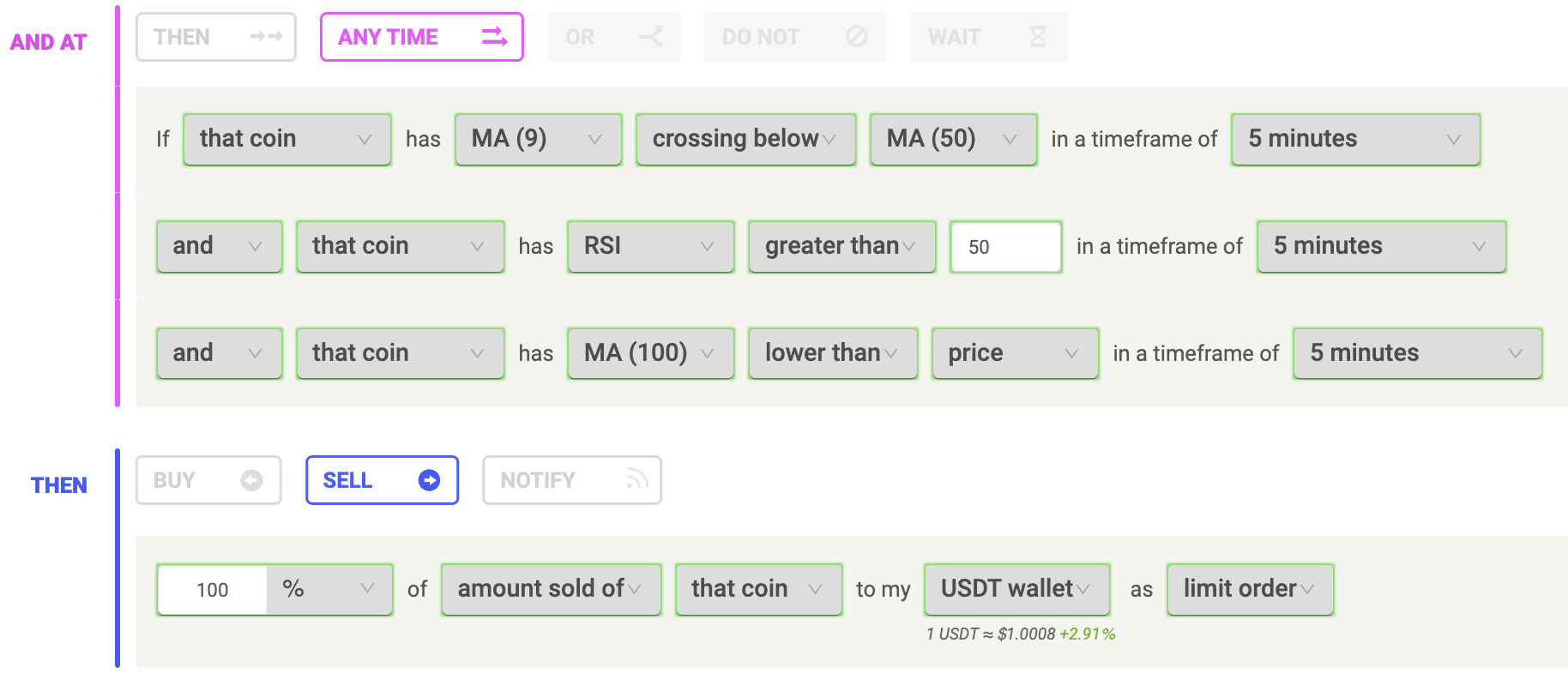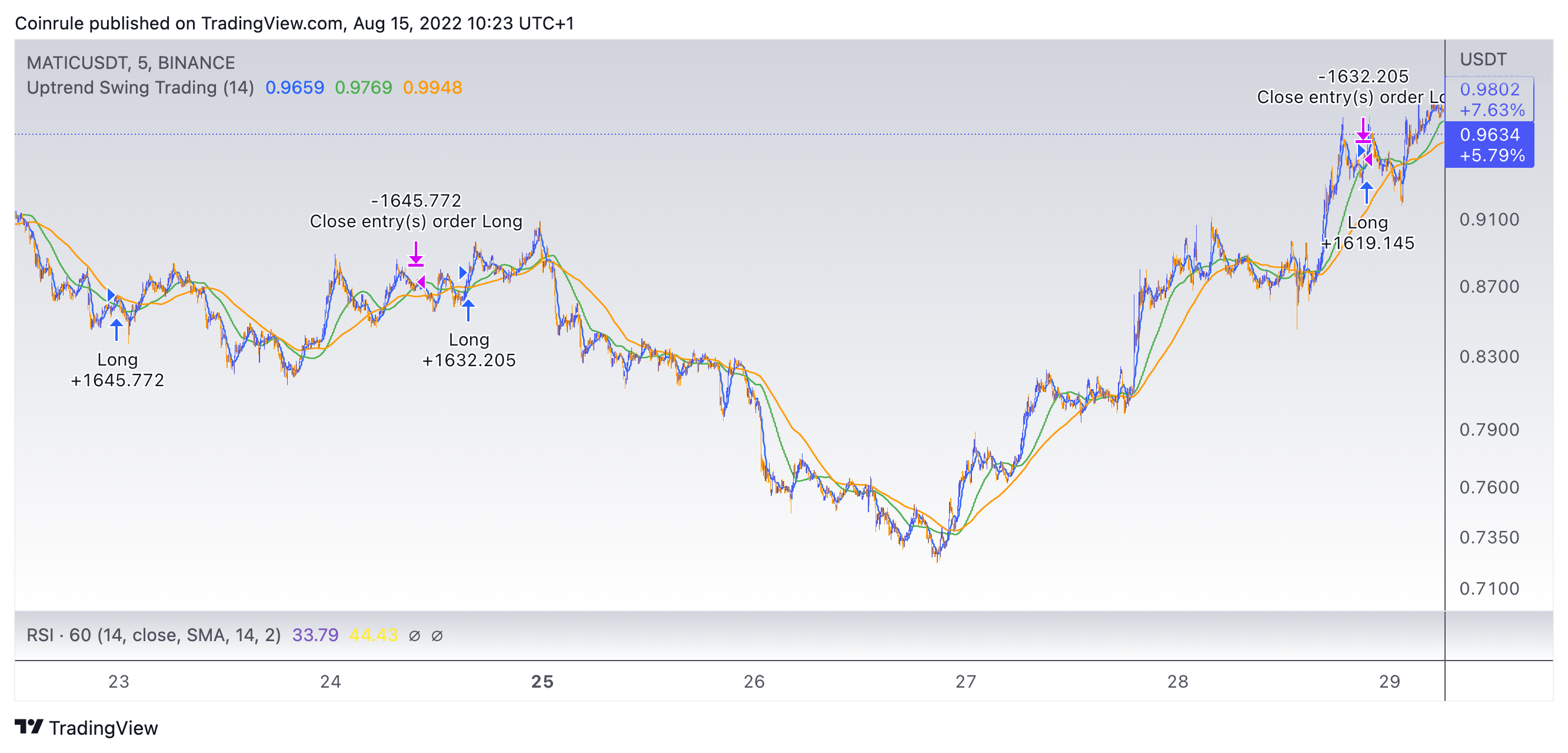Uptrend Swing Trading
Last updated November 3, 2024
Introducing The 'Uptrend Swing' Trading Template
The Relative Strength Index is one of the most commonly used technical indicators when trading. It can give an indication of whether a coin is over or undervalued in relation to the previous 14 candles in the selected timeframe.
Moving averages can provide a signal of the trend of a coin. They can also act as support and resistance with price breaking above a significant moving average suggesting the start of an uptrend. If price breaks below it can signal the start of a downtrend. A short-term moving average crossing above a long-term moving average signals the start of a potential uptrend. The inverse suggests a downtrend is beginning.
Build This Rule on Coinrule!
Entry
Condition 1
The first condition for this rule utilises the RS, and will be met once it is lower than 70 in a 5-minute timeframe. This ensures the rule is not buying coins that could be considered overvalued over the past 14-periods.
Condition 2
The second condition also utilises the RSI and is met once the RSI increases by 5 within a 5-minute period. This signals that momentum is increasing to the upside and buyers are showcasing strength.
Condition 3
The third and final condition for the entry is met once the moving average (MA) 9 crosses above the MA 50 in a 5-minute timeframe. The shorter-term moving average (MA 9) crossing above the longer-term moving average (MA 50) signals that an uptrend is occurring and price appreciation could continue with the coin's momentum increasing (As indicated by the RSI).
Exit
This rule uses a dynamic stop loss and take profit for the exit, leading to the rule holding trades for an extended period of time to maximise exposure to extensive moves to the upside.
Condition 1
The first sell condition also uses the MA 9 and MA 50 in a 5-minute timeframe. Once the MA 9 crosses below the MA 50 the condition will be met. This crossing could suggest the start of a downtrend signal that price will continue declining - leading to a potentially good time to exit the trade.
Condition 2
The second sell condition uses RSI and is met once it is greater than 50 - signalling price is still above the 50 level, also known as the "fair value level" for the selected timeframe. This will prevent the rule from selling on a dip and to increase the probability of it selling when the coin is within "Overvalued territory" on the RSI.
Condition 3
The third condition uses the MA 100, with the rule only selling if the MA 100 is lower than price in a 5-minute timeframe. This will also prevent the rule from selling when the coin is on a downtrend and increase the likelihood of the coin selling when it is in profit.
Backtesting Results
When backtested against MATIC / USDT from May 1st 2022 to August 15th 2022, the rule achieved a net profit of 54.4% with a 83.3% win ratio.





